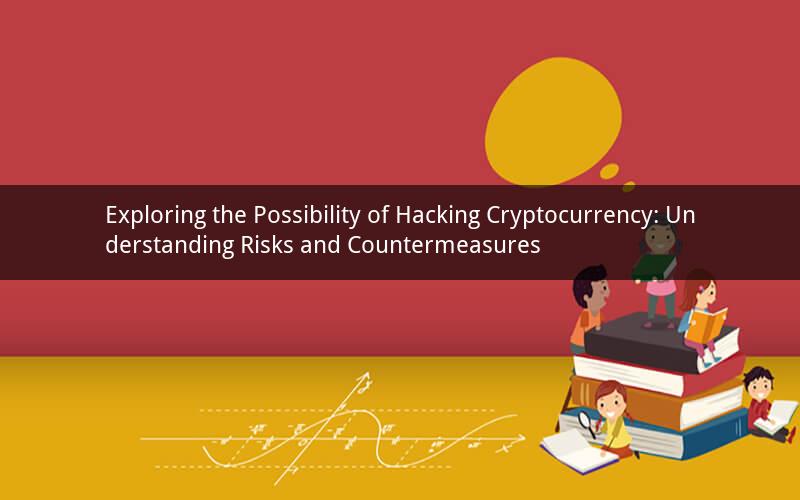
Introduction:
Cryptocurrency has emerged as a revolutionary digital asset, gaining widespread popularity and adoption. However, with its rise, concerns regarding the security and vulnerability of these digital currencies have also increased. One of the most frequently asked questions is whether it is possible to hack a cryptocurrency. In this article, we delve into the intricacies of hacking cryptocurrency, its potential risks, and the countermeasures that can be employed to safeguard these digital assets.
1. Understanding Cryptocurrency and its Security Mechanisms
Cryptocurrency operates on blockchain technology, which is a decentralized and immutable ledger of transactions. This distributed nature makes it highly resistant to hacking attempts. However, understanding the underlying security mechanisms of cryptocurrency is crucial in assessing the possibility of hacking.
a. Cryptographic Algorithms:
Cryptocurrency relies on strong cryptographic algorithms, such as SHA-256 and ECDSA, to ensure the security of transactions and the integrity of the blockchain. These algorithms make it computationally infeasible for an attacker to manipulate or alter the blockchain.
b. Public and Private Keys:
Each cryptocurrency wallet is associated with a pair of public and private keys. The private key is used to authorize transactions, while the public key is used to verify the ownership of the wallet. The security of these keys is vital in preventing unauthorized access to the wallet.
2. Types of Cryptocurrency Hacking Attacks
Despite the robust security mechanisms, cryptocurrency is not immune to hacking attacks. Here are some common types of attacks that can compromise the security of cryptocurrency:
a. Phishing Attacks:
Phishing attacks involve tricking individuals into revealing their private keys or login credentials. These attacks often come in the form of fraudulent emails, websites, or messages, aiming to steal sensitive information.
b. Man-in-the-Middle (MitM) Attacks:
MitM attacks occur when an attacker intercepts communications between two parties, such as a user and a cryptocurrency exchange. By manipulating the communication, the attacker can steal private keys or alter transactions.
c. 51% Attacks:
In a 51% attack, an attacker gains control over more than half of the network's computing power. This allows the attacker to manipulate the blockchain, double-spend coins, or prevent legitimate transactions from being confirmed.
d. Smart Contract Vulnerabilities:
Smart contracts are self-executing contracts with the terms directly written into code. Vulnerabilities in smart contracts can be exploited by attackers to steal funds or cause other unintended consequences.
3. Countermeasures to Protect Cryptocurrency
To safeguard against cryptocurrency hacking, it is essential to implement robust security measures:
a. Secure Wallets:
Use reputable wallets that employ advanced security features, such as hardware wallets, which store private keys offline. Additionally, ensure that your wallets are regularly updated to protect against known vulnerabilities.
b. Multi-Factor Authentication (MFA):
Implement MFA for your cryptocurrency accounts to provide an additional layer of security. This ensures that even if an attacker obtains your username and password, they cannot access your account without the second authentication factor.
c. Educate and Raise Awareness:
Stay informed about the latest hacking techniques and educate yourself on best practices for securing your cryptocurrency. Avoid clicking on suspicious links, be cautious with sharing personal information, and keep your software and devices up to date.
d. Regular Backups:
Regularly backup your cryptocurrency wallets to prevent data loss. This ensures that even if your wallet is compromised, you can recover your funds from a backup.
e. Use Secure Networks:
Avoid conducting cryptocurrency transactions on public Wi-Fi networks, as they can be easily intercepted by attackers. Use a secure and encrypted connection, such as a VPN, to protect your transactions.
4. Legal Implications of Hacking Cryptocurrency
Hacking cryptocurrency is a serious offense, and individuals caught engaging in such activities can face severe legal consequences. Laws and regulations regarding cryptocurrency hacking vary across jurisdictions, but it is generally considered illegal and punishable by imprisonment and fines.
5. Conclusion
While the possibility of hacking cryptocurrency exists, its security mechanisms make it a challenging target. By understanding the risks and implementing robust security measures, individuals can protect their digital assets from potential hacking attempts. Staying informed and vigilant is crucial in the ever-evolving landscape of cryptocurrency security.
Questions and Answers:
1. What are the most common types of cryptocurrency hacking attacks?
Answer: The most common types of cryptocurrency hacking attacks include phishing attacks, man-in-the-middle attacks, 51% attacks, and vulnerabilities in smart contracts.
2. How can I protect my cryptocurrency wallet from hacking?
Answer: To protect your cryptocurrency wallet, use secure wallets with advanced security features, enable multi-factor authentication, regularly backup your wallet, and avoid conducting transactions on public Wi-Fi networks.
3. Can 51% attacks be prevented?
Answer: While 51% attacks are challenging to prevent, they can be mitigated by ensuring that the cryptocurrency network has a high level of decentralization and a large number of nodes.
4. What are some common signs of a phishing attack?
Answer: Common signs of a phishing attack include suspicious emails or messages, requests for personal information, links leading to fake websites, and urgent or threatening language.
5. Can using a VPN protect my cryptocurrency transactions?
Answer: Yes, using a VPN can provide an additional layer of security by encrypting your internet connection and masking your IP address, making it more difficult for attackers to intercept your transactions.